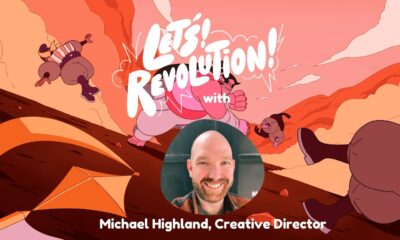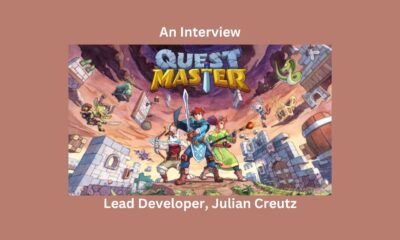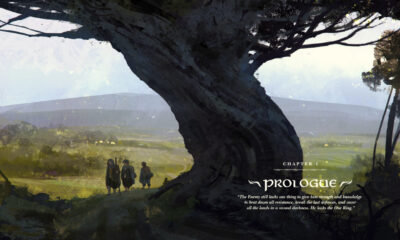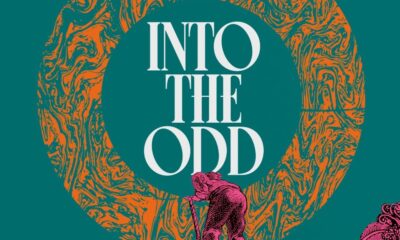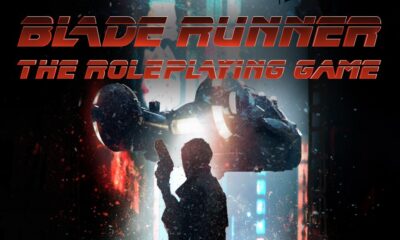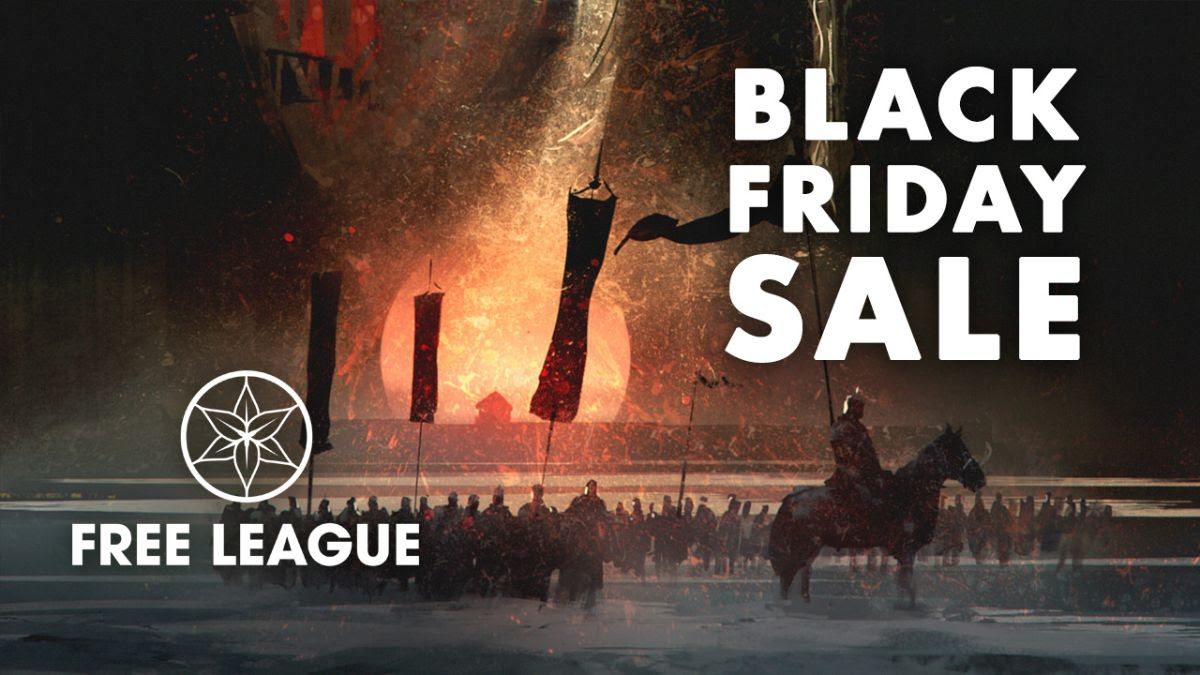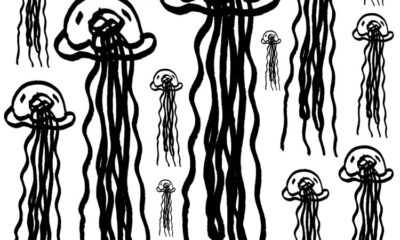
Interview with Martin Takaichi
More Videos
Published
3 years agoon
By
Leather SnowFree League Publishing recently released Tales From the Loop, a sci-fi adventure board game based on the popular art book by Simon Stålenhag. I had the opportunity to interview Martin Takaichi, the lead designer of the game. Our conversation has been edited for length and clarity.

Tell us a little about yourself, and how you got into game design?
Well I’ve been tangentially involved with gaming since I was like 8 or 10 or something, when I started playing games, and then I started working in game stores and coming into contact with a bit of the game design scene in the 80’s. I actually started professionally designing games about 10 years ago now? I started helping out, since I’m friends with several of the Free League members, they asked me to help out with playtesting and a few other things, kinda brought me in for small pieces here and there. When they were going to make the Crusader Kings board game they asked for my help since I have more board game experience than they do. So they took me in there as kind of a consultant, basically, so I helped them create the foundations, the core of the game, on which Thomas could innovate on and make all the details. And then of course after that they asked me if I could make a Tales From the Loop game, which, yeah, I could, I wanted to. The era of the art books is very much of the same time as when I was growing up and a lot of the images are things I recognize, the islands where it takes place are close to where I grew up and I have friends from there, so it’s a very familiar piece of terrain. It was a lot of fun to dig into that and dig into my own memories of the time and spill that into the game.
Were you adapting just the art book, or also the tabletop game?
We discussed what kind of game it would be, and our first thought was to try to make a board game version of the role playing game in a way, but then of course we explored other ideas, like we could maybe make a game where you’re like magnetrine transport, or you might have a one against many kind of game where you have an overlord or mysterious Loop character. So we explored different avenues, at the end we just came back to the thing like yeah, we’d like to try and bring the RPG and put it in the board game format since I mean, most role players I know play board games but not all board gamers play roleplaying games, so we wanted to bridge that gap a little bit. So in the end it was just “Okay, let’s see how close we can get the experience to playing the RPG.” But of course the art book is still the core.
What were the core elements from the art book that you felt were most important to incorporate into the game?
I think one of the most important things about Tales From the Loop, the thing that makes it work, is the juxtaposition of the very mundane, y’know kids in 80’s clothes going to school, and then of course the extraordinary, like the machines, the dinosaurs, the strange monsters. We built the RPG where you have these adventure scenes and then also the at home scenes with your parents or something like that. And we wanted from the start, like we really need to capture that. So that was part of the reason for why we have the parental happiness mechanic, if they’re nice and happy they can give you rides, or if they’re angry you get grounded, and also the system of having chores that you need to do, so it’s not always just going about looking for dinosaurs, sometimes you just have to go and pick up your little sister from daycare or something. That was the key important thing, and then of course just the fun kids on wacky adventures feel too, cause the art book, you know, sometimes it’s fairly wacky, and sometimes it’s very dark, and the Amazon series as well is also kind of leaning more towards the melancholy, slightly dark tones. And we like those, we really do, but for this game we wanted to keep it more springy and happy.
Something that interested me about the is you’re not just gamifying the experience of solving a mystery, you’re also gamifying the experience of being a kid. What were some of the challenges with that, and how did you balance the two?
Since that was one of the foundations when I started designing the game, I was like, “Okay, I want these two things.” It would have been much harder to implement or bring it in later to the process but since we had it from the start it was something where we could continually adjust the balance here and there. But I think one of the challenges of making this kind of game, I think often many games (not all of course but many games) that try to emulate the RPG feel they do it a way that’s, y’know you pull up a card and then there’s a lot of text to read, like, oh this happens and blah blah blah, and there’s a monster or something and there’s flavor text, and then at the end roll this. And that doesn’t really make me feel in character, just makes me read little text and then kinda, “Huh.” And if I play the game long enough I usually just skip the text and go “Okay, what do I need to roll?” So we wanted to avoid that. And really like, how does it feel to be a kid? What’s the thing to bring into the mechanics to create the theme of it? To have the mechanics of the items you pick up, or the chores you need to do, or you need to go home in time, and really have those kind of things create the theme among the players rather than have them on the cards. And it was a bit challenging for us, because you need to find the right balance. But I think in the end for me when I watched people playtest, and you can see usually at the start of a turn they’ve been to school, they’ve heard some new rumors and have some ideas and they say okay we need to go here, and then they huddle up and they have this plan, they’re gonna go over here and do this thing, and then one of them chimes in, “Uh, no, hang on, I have to, you know, mom, she asked me to pick up some things at the grocery store, so I have to go, sorry guys,” and everyone’s like “Oh no!” And that’s the experience, what it is when it really works, and it seems to compel people, people seem to like it. So yeah, I’m very happy.
What were some other sources of inspiration?
Recently of course, there’s been Stranger Things, which has been like a huge thing, and I guess we were fortunate to have been ahead of that wave a little bit, since we managed to- I mean Simon Stålenhag precedes Stranger Things, and our game ultimately precedes Stranger Things- but we got right on top of that wave, we were able to ride it through so of course that’s another modern inspiration. We also have some old Swedish tv series I was watching when I was a kid, but then just the general sense of fun and adventure, something very light, that makes you kind of recognize things from when you were a kid. When we were creating the items for example we wanted to take things that felt familiar to a large population, not just here in Sweden, though we have some Swedish easter eggs in there. We have simple things like bikes and chewing gum and things, tweaking the logos and things to make them fit the universe. So just taking things from our own lives, movies we like.
You mentioned you were working on the Crusader Kings project, how did your experience with that contribute to this project?
I wasn’t heavily involved in the start of that project but it was still very good to get better experience working with a team in a way that I haven’t done before. When designing board games just for yourself and your friends, that’s one thing. The number of iterations that’s required and how you really need to be on point to make sure that everything really works, and even now there are things that are gonna turn up that’s like, if we do this and this thing in the game, and this thing is also happening, it kinda breaks a little bit, cause it’s a complex game. But still, to have another understanding of the requirements needed was very good. And also just producing board games these days is just a big apparatus, with international shipment and everything.
In what ways did the game change over the course of design? What kinds of elements were added or dropped?
There hasn’t been some really major changes, but of course a number of smaller changes, like for example at the start we had cards that if you went somewhere and there wasn’t something special that happened there you got to pull generic cards with mini events depending on where you were. In the end we dropped that. They were fun and flavorful, but they also diluted the experience a bit, so we dropped those to keep the focus on the narrative and the actual rumors. Also the streamlining being done, we simplified the hacking quite a bit. From the start hacking was like a hacking tree and depending on how the machine looked different things happened, and even now I think maybe we should have simplified it a bit more, but still, it’s smoother now than it used to be. Overall I think the core experience stayed pretty consistent from the start. The diary cards, the rumor cards, school cards, it’s been surprisingly stable I’d say. But of course filing down little nubs here and there to make sure there’s no too-sharp corners. We also had for a while, I think actually during the alpha for the Kickstarter, we had specific action sections on the player board. I just realized that’s really not important, we can just have a big pool and you put them there and you do the thing on the board, so small things like that, to just get a better experience.
How was working with Kickstarter? How did that effect development?
Free League has been doing Kickstarter for a while now, we have good experience with it now, but of course it’s somewhat different making an RPG and making a board game. There’s a slightly different crowd, and different kinds of stretch goals you can do, and it’s also different kind of feeling because you run the Kickstarter and you have an almost finished game, and once the Kickstarter’s over you have more of a time pressure, there’s more to complete the thing, you have more of a deadline issues, whereas if you develop it outside of Kickstarter you’re more free to have a little bit more leeway. I mean, we were very happy how the Kickstarter turned out, and we had a great working relationship with Dust Studio, the guys who made the miniatures (well, made the actual entire game, not just the miniatures), so that process has been really smooth. It’s more how shipping works these days, has been more of, I wouldn’t say nightmare, but still it kept me up a couple of nights. Things are slow moving these days, and expensive.
How did the design inform the components? Like keeping in mind how many components you might need, what kind, things like that?
That’s another thing with making board games that are more complex than an RPG. With an RPG of course you have the page count to have in mind, but for a board game there’s more components. For example how much punchboard can we put in the box, and we counted things out. From the beginning we wanted a very thin box, that was our hope, and it kinda swelled out a little. It’s still okay, it’s not too thick, but we would have preferred a thinner box. But still, just counting out “Okay, we want all of these counters, and all of this thing, and that would take this much punchboard, then you know how much you have, and you count out all the items that are needed and then you realize like “Okay, there’s some space left, what can we use for that space?” Another thing, ideally we would like to have had cardboard minis for the machines as well, as a bonus for people who want to have their machines on display or something, unfortunately the available space was just a bit too small, so we couldn’t do it. It’s interesting the different things you have to take into account. But again, Dust Studios were very easy to work with and they helped us out a lot with designing the tray and the insert. I’ve been playing board games for 35 years, so for me it’s very important that if we want to make an insert, either we shouldn’t make an insert at all or it should be an insert that’s actually usable so people don’t just throw it out, because that’s what I tend to do with most of my games, cause most of the time they’re not useful. But here we actually spent some time to make sure that it works and it’s useful. We had a bit of a discussion, we should have miniatures for the kids as well, but in the end we decided against it because the kids, we want them to- I mean the art, that’s Simon’s art for the kids of course, and I think turning those kids into 3d models wouldn’t be as exciting as the machines. We also wanted the machines to pop more on the board, so in the end we went with the two different things, and I know some people, they want all models or all cardboard, not this strange mix, but for us it was important to keep them separate and to make the machines pop.
What was the best part about working on this project?
I think for me still one of the best parts was to go back to [Simon’s] books and really make the connection with my own childhood in a way and then figure out how to capture that feeling, cause when I was a kid and I was with my friends and we had our bikes and you were out playing in the woods or whatever for a few hours and then come back for dinner and just, can we capture that? Just pulling things from that experience and putting it into the game, and especially seeing playtesters getting it like “Oh!” And lighting up, it’s like “Okay, they get it, this works,” so that was really gratifying.
Where do you plan to go from here?
We have ideas of course, since there’s two books to the Loop universe. So far we have Tales from the Loop, then of course Things from the Flood, which is we move the story to the 90’s, and it becomes a little bit darker, they’re teens and there’s mutated strange machines, stuff like that, so that would be interesting. It could be a standalone expansion in a way, like a sequel game maybe, or we could do something else, we could make more smaller expansions like we have now, The Dinosaur and The Runaway, but first off we’re going to wait. We have the retail release very soon here and then we just want to see how people take to the game. So far it seems like people are enjoying it, so if people want more, who are we to say no? We would love to make more games in the Loop universe, just not anything decided quite yet though. But there will be more other games.

Tales from the Loop is out now, you can check it out on Free League’s website here. You can check out the art book the game is based on at the link below. Remember that we are an Amazon affiliate, and if you buy anything from the amazon links provided, we will get some $ back. You can find Martin on Twitter @firebroadside.
You may like
-
Interview with Creative Director Michael Highland: Let’s! Revolution! @ PAX
-
Interview with Game Dev Julian Creutz: Quest Master @ PAX
-
Heroic Adventures Await: An Epic Review of The One Ring Starter Set
-
Into the Odd Remastered: an Ethereal Steampunk TTRPG
-
Blade Runner RPG Starter Set Review
-
Free League Publishing Black Friday Sale Now Until Nov 28!
Gaming
Lovecraft Meets Junji Ito in WORLD OF HORROR
WORLD OF HORROR is a cosmic horror roguelite game developed by Paweł Koźmiński and published by Ysbryd Games.
Published
3 months agoon
December 31, 2024WORLD OF HORROR is a cosmic horror roguelite game developed by Paweł Koźmiński and published by Ysbryd Games. The game is available on macOS, Windows, Nintendo Switch, PlayStation 4, and PlayStation 5. This review will cover the Steam (Windows) version of the game.
You must explore the strange goings on around Shiokawa, Japan. It appears that eldritch forces have influenced the town in incomprehensible ways. So, attempt to comprehend these forces and maintain your sanity to save the town. Plan your investigations, choose between cases, and fight for your life.
There are a few game modes but three difficulty spikes. The easiest is a specific case with some random events. This mode teaches you the basic mechanics of the game. The harder difficulties give you access to an apartment and choices on which case you investigate. Completing objectives earns you customization options for the customized mode.

What I Like About WORLD OF HORROR
Running on GameMaker Studios, the pixelated aesthetic shows influences from Lovecraft and Junji Ito, though the latter more so than the former. WORLD OF HORROR haunts its viewers with its aesthetic, allowing the pixels to evoke those horror legends.
Random generation remains a key feature of the game, with various options and choices giving a massive variety. Your character also has some limited customization to access perks and further development. I will bring up some weaknesses later, but it is surprisingly vast. Adding to this variety, WORLD OF HORROR provides mod accessibility.
The combat allows for a great deal of thought and planning. You select your character’s actions within an action bar and perform the tasks (or combos) to beat an opponent. This JRPG style provides variety in action that makes it engaging and unique.
- Hardcover Book
- Ito, Junji (Author)
- English (Publication Language)
Last update on 2025-01-25 / Affiliate links / Images from Amazon Product Advertising API
The random generation and variety make each playthrough different. You might acquire a devastating katana in one playthrough only to bleed out unceremoniously in another.
While not a terrifying gaming experience, WORLD OF HORROR strives to provide an eerie and intense experience. At this, the game is a success. The weird and unnerving collide to invest the player in this strange world.

Tired Tropes and Triggers
Body horror deserves a mention, but the aesthetic and pixels doesn’t particularly evoke realism. Regardless, many designs evoke body horror.
Aside from this, here are some points of consideration. First, WORLD OF HORROR uses JRPG turn-based combat, which seems a point of division among some gamers. However, there are enough interesting mechanics and complexities beyond clicking an action and waiting your turn.
- Hardcover Book
- Ito, Junji (Author)
- English (Publication Language)
Last update on 2025-01-25 / Affiliate links / Images from Amazon Product Advertising API
Second, WORLD OF HORROR isn’t a cult detective. You’re experiencing events and choosing how your character responds. Some sage wisdom I heard for WORLD OF HORROR is to focus on the whole campaign instead of a single case. Failing a case isn’t a game over, so prioritize your character’s longevity.
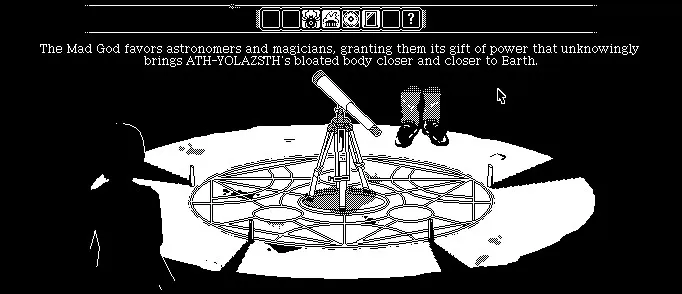
What I Dislike About WORLD OF HORROR
Only a few issues hindered my experience. Some scenarios replay on a single case, let alone a playthrough, which becomes repetitive. Some scenarios have multiple solutions to add variety or require perks to access new options, but that’s not always true. This issue makes the randomization taxing at times.
This next issue is likely a bug or an oversight. After losing my reason (sanity), I found myself still able to investigate despite the game claiming that means death. An unrelated event finished me off, but I can’t help but assume this is a bug.
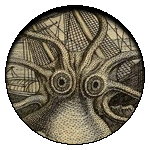
Final Thoughts
WORLD OF HORROR has its quirks but earns massive replay value and surprising depth. It’s a unique and ambitious indie title worth the price. If Junji Ito’s style or cosmic horror is your particular brand of horror, WORLD OF HORROR delivers an experience you’ll likely enjoy. Though this combination synergizes well, few games combine these elements successfully.
Gaming
🎮 Eldritch Automata: Exclusive GenCon 2024 Reveal with Nick Francia!
Published
7 months agoon
August 25, 2024By
Jim PhoenixStep into the mind-bending world of Eldritch Automata as we sit down with Game Designer Nick Francia at GenCon 2024!
Uncover the secrets behind this Lovecraftian mecha-masterpiece and get a glimpse of what’s to come.
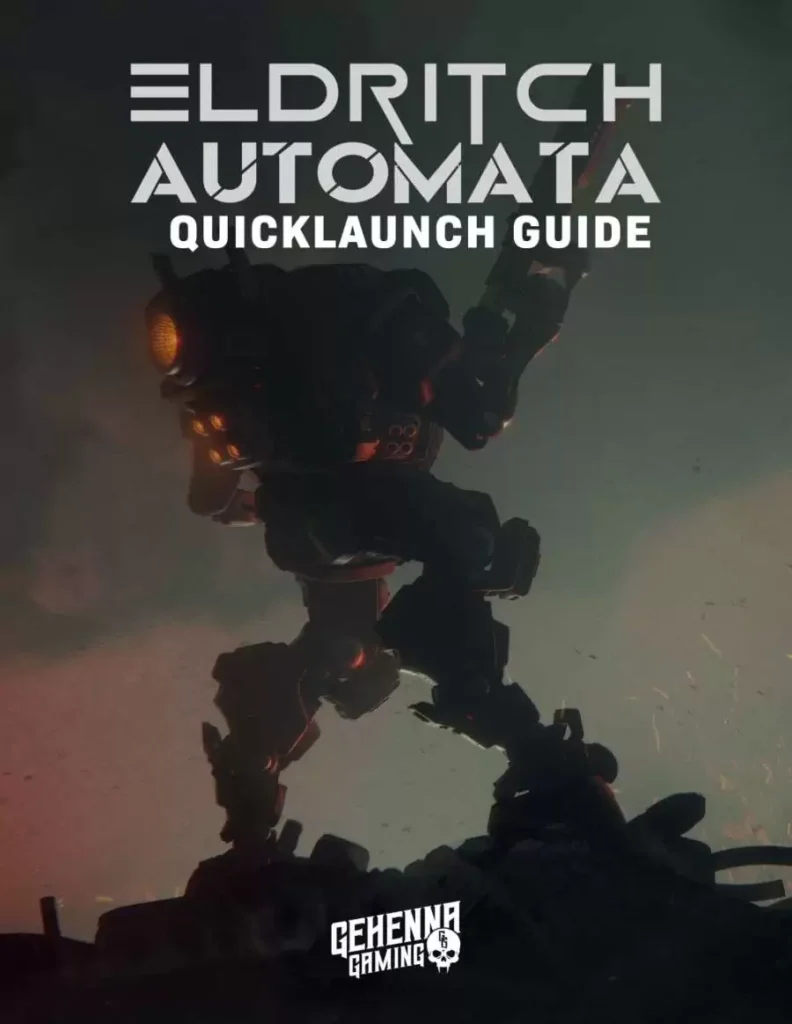
In this exclusive interview, Nick Francia shares:
• The intricate game development process • Inspirations behind the eerie Lovecraftian elements
• Unique mecha-infused gameplay mechanics Calling all Lovecraft fans! Dive into a world where eldritch horrors meet steam-powered marvels.
Eldritch Automata promises an unforgettable gaming experience that will keep you on the edge of your seat.
👉 Ready to embrace the madness? Check out our playable demo at a con near you! #EldritchAutomata #GenCon2024 #LovecraftianGaming #IndieGameDev
Gaming
🎬🎃 House of 1000 Corpses and Halloween II–GAMES!! 🎃🎬 Trick or Treat Studios
Published
7 months agoon
August 25, 2024By
Jim PhoenixPrepare for a spine-chilling experience as Jim Phoenix delves into the shadows with Trick or Treat Studios at GenCon 2024!
In this exclusive interview, we uncover the terrifying secrets behind their latest bone-chilling creations: “House of 1000 Corpses” and “Halloween II” board games.
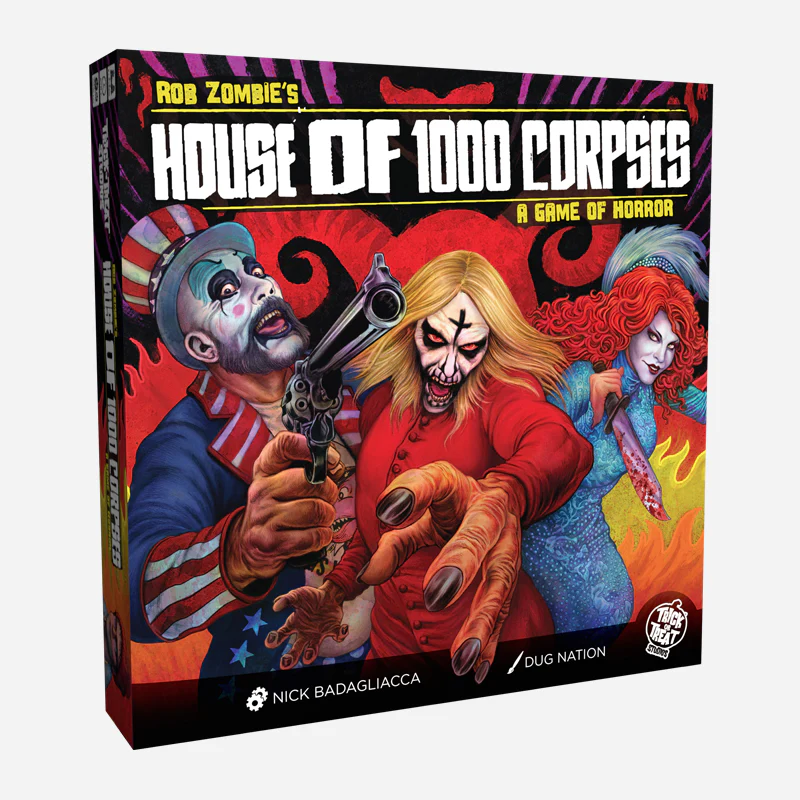
These games aren’t just about rolling dice – they’re about immersing yourself in the blood-curdling atmosphere of beloved horror films. With unique survival (and kill!) horror mechanics and cooperative gameplay, you’ll feel the terror coursing through your veins with every move!
But wait, there’s more! With the Kickstarter to House of 1000 Corpses shipping soon, we have an in-depth review coming up for that game, Halloween II–AND…Chucky. BOOMMM!!!


